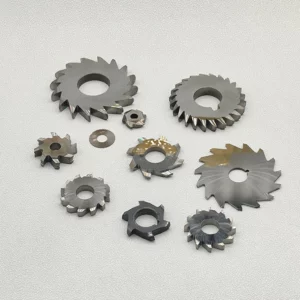Carbide-tipped saw blades for metal, undoubtedly, stand out as indispensable tools in the realm of metalworking. Their exceptional performance, durability, and precision make them the preferred choice for professionals and enthusiasts alike. In this article, we delve into what makes carbide-tipped saw blades ideal for metalworking, examining their unique features, benefits, and applications.

At the heart of the carbide-tipped saw blade for metal lies its construction. Unlike conventional blades, these saw blades boast a combination of tough steel bodies and carbide tips. This amalgamation creates a cutting edge that is both resilient and sharp, capable of withstanding the rigors of metal cutting while maintaining its cutting prowess over prolonged use.
One of the most striking features of carbide-tipped saw blades is their exceptional hardness. The carbide tips, typically made from tungsten carbide, exhibit remarkable hardness and wear resistance, enabling them to effortlessly slice through various metals, from soft aluminum to tough stainless steel. This hardness ensures minimal wear and tear even under high-speed cutting conditions, resulting in extended blade life and reduced downtime for replacements.
Precision is another hallmark of carbide-tipped saw blades for metal. The sharpness and uniformity of the carbide tips allow for clean and precise cuts, eliminating the need for secondary finishing processes. Whether it’s intricate designs or straight cuts, these blades deliver consistent results, making them invaluable in industries where precision is paramount, such as aerospace and automotive manufacturing.
Moreover, carbide-tipped saw blades excel in versatility. They can tackle a wide range of metals, including ferrous and non-ferrous materials, without compromising on performance. Whether it’s cutting thin sheets or thick bars, these blades offer exceptional versatility, making them suitable for diverse metalworking applications, from fabrication to construction.
The durability of carbide-tipped saw blades is a significant advantage in metalworking operations. Unlike traditional blades that dull quickly when cutting hard materials, carbide tips retain their sharpness for an extended period, ensuring consistent cutting performance throughout the blade’s lifespan. This durability translates to increased productivity and cost savings for businesses, as they require fewer blade changes and maintenance efforts.
Furthermore, carbide-tipped saw blades contribute to enhanced safety in metalworking environments. Their precision-engineered design and stable cutting performance reduce the likelihood of kickbacks and accidents, safeguarding operators and machinery alike. Additionally, the reduced need for manual interventions, such as blade changes or adjustments, minimizes the risk of injuries during operation.
In the realm of metalworking, efficiency is key, and carbide-tipped saw blades deliver on this front with flying colors. Their superior cutting speed, coupled with minimal heat generation and vibration, results in efficient material removal and smoother cuts. This not only improves overall productivity but also ensures superior surface finish, reducing the need for additional processing steps.
In conclusion, carbide-tipped saw blades for metal embody excellence in every aspect of metalworking. From their robust construction to precision cutting performance and unmatched durability, these blades set the benchmark for quality and reliability in the industry. As metalworking continues to evolve, carbide-tipped saw blades remain steadfast as indispensable tools, empowering craftsmen and manufacturers to achieve unparalleled results with every cut.
